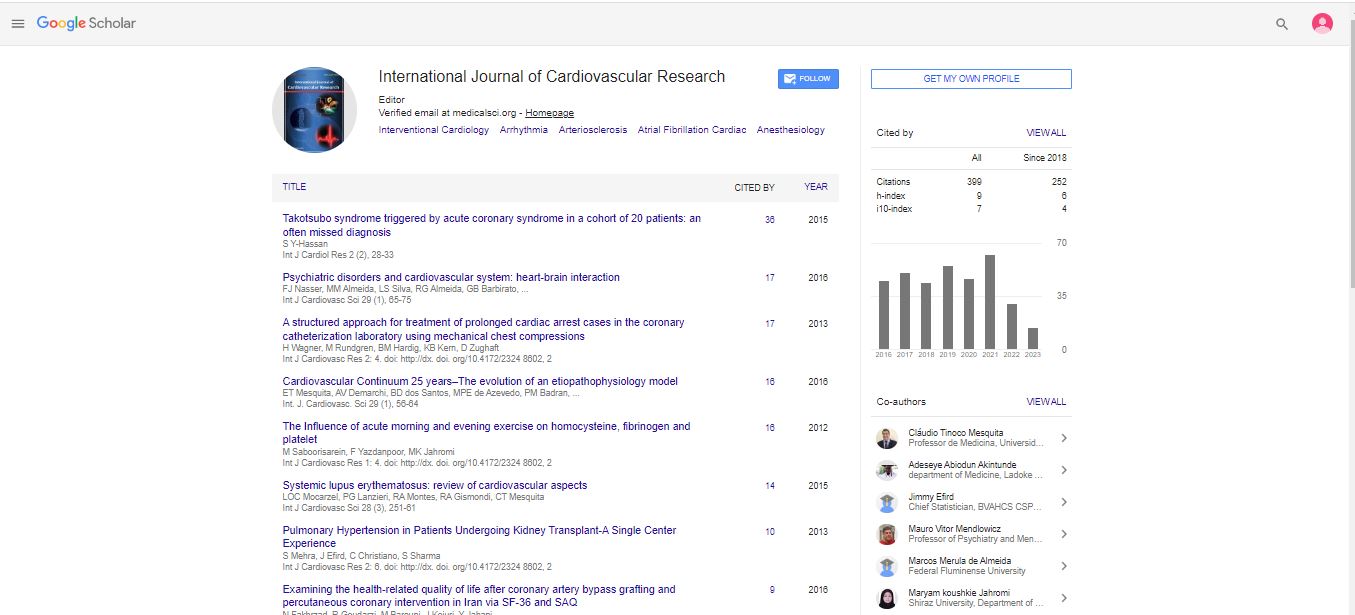Research Article, Int J Cardiovasc Res Vol: 4 Issue: 4
When Size Matters: Challenging the Obesity Paradox. Analysis of 3,977 Cardiac Patients and Review of the Literature
| Mohamed Zeinah1,2, Hamza El-Nady1 and Dumbor L Ngaage1* | |
| 1The Essex Cardiothoracic Centre, Basildon University Hospital NHS Foundation Trust, Basildon, UK | |
| 2Cardiac Surgery Department, Ain Shams University, Cairo, Egypt | |
| Corresponding author : Dumbor L Ngaage MD The Essex Cardiothoracic Centre, Basildon University Hospital, Basildon, Essex SS16 5NL, UK Tel: +44 1268 524900; Fax: +44 1268 394334 E-mail: dngaage@yahoo.com |
|
| Received: February 14, 2015 Accepted: April 20, 2015 Published: April 22, 2015 | |
| Citation: Zeinah M, Ngaage DL (2015) When Size Matters: Challenging the Obesity Paradox. Analysis of 3,977 Cardiac Patients and Review of the Literature J Cardiovasc Res 4:4. doi:10.4172/2324-8602.1000219 |
Abstract
When Size Matters: Challenging the Obesity Paradox. Analysis of 3,977 Cardiac Patients and Review of the Literature
Aim: The relationship between obesity and surgical outcomes, including the reported “obesity paradox”, remains controversial. We examine the influence of obesity, as defined by the WHO, on cardiac surgery outcomes. Methods: We analysed prospectively collected data for CABG and/ or valve patients (n=3,977) from 2007 through 2012, and identified six WHO body mass index (BMI) categories. We investigated the impact of BMI on operative mortality and morbidity, and performed a literature review. Results: Most patients (76.5%) had elevated BMI (kg/m2): overweight (25–29.9) 43.1%, class I obesity (30–34.9) 22.9%, class II obesity (35–39.9) 8.1%, and class III or morbid obesity (=40) 2.4%. Ideal BMI (18.5–24.9) constituted 22.8% and underweight BMI (<18.5) 0.7%. Median age and predicted mortality decreased substantially, while the prevalence of diabetes increased, with rising BMI. Extremes of BMI were associated with higher rates of respiratory complications, haemofiltration, long hospital stays and operative mortality. Surgical site complications increased progressively with BMI. After adjusting for potential confounders, ideal weight patients had the lowest operative mortality. By multivariate analysis, BMI <18.5 kg/m2 (OR 8.60, 95% CI 2.35–31.49) and BMI=40 kg/m2 (OR 4.56, 95% CI 1.18–17.65) were independent predictors of mortality. Literature review revealed lack of support for “obesity paradox”. Conclusion: Most cardiac patients are overweight and have outcomes that are comparable to ideal BMI patients. Underweight (BMI<18.5 kg/m2 ) and morbid obesity (BMI=40 kg/m2 ), however, independently increased the risk of operative mortality. The “obesity paradox” is not supported in cardiac surgery patients.




